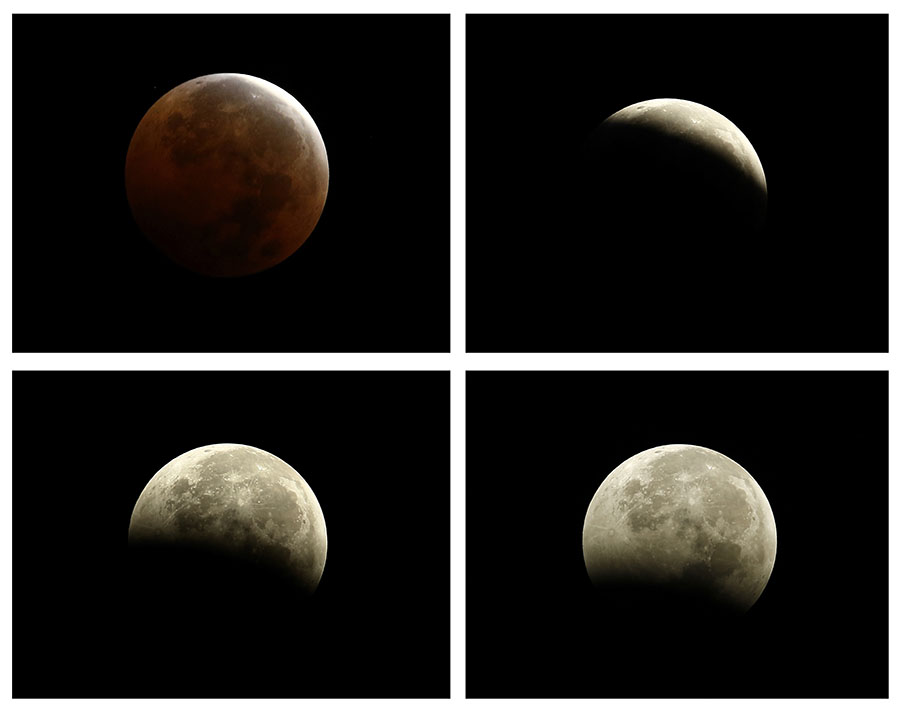Evening viewers in much of Asia and early risers in parts of the Americas were treated to a stunning lunar eclipse, though clouds obscured it for some.
Lucky ones saw the moon turn orange or red Wednesday in what is known as a ``blood moon.'' The hue results from sunlight scattering off Earth's atmosphere.
 |
|
A combination photo shows (clockwise from top left) the moments during and after a total lunar eclipse, also known as a "blood moon", pictured from Encinitas, California October 8, 2014. The coppery, reddish color the moon takes is made as it passes into Earth's shadow. The total eclipse is the second of four over a two-year period that began April 15 and concludes on Sept. 28, 2015. The so-called tetrad is unusual because the full eclipses are visible in all or parts of the United States, according to retired NASA astrophysicist Fred Espenak. [Photo/Agencies] |